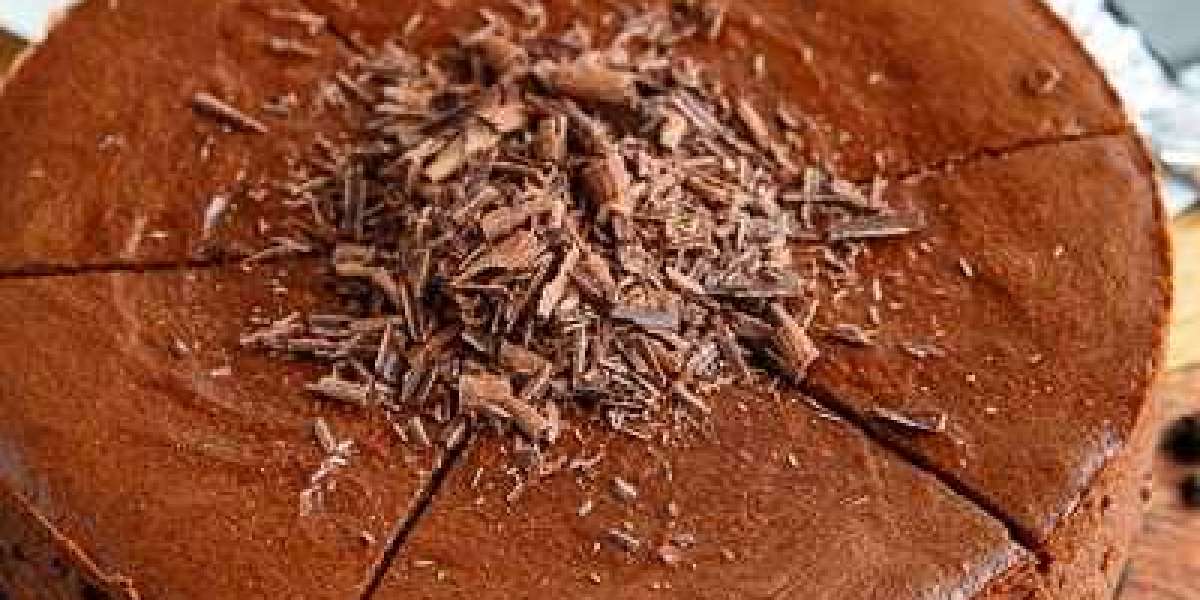When it comes to creating the perfect cake, the flavor combinations are key. From the moist layers of chocolate to the delicate notes of vanilla, cake flavors set the tone for the entire dessert experience. However, choosing the right frosting to complement these flavors can elevate your cake to a whole new level. Whether you're making a homemade treat for a special occasion or planning a grand celebration, understanding how to pair frosting with your cake is essential to achieving the best results. In Lahore, where the best cakes in Lahore culture is thriving, the right frosting can turn any cake into a masterpiece.
The frosting you select should not only enhance the taste but also enhance the overall aesthetic. The balance between sweetness, texture, and the visual appeal of your frosting can create a cake that is both visually stunning and delicious. Whether you're baking for a birthday, a wedding, or just a simple gathering, getting the frosting right is just as important as the cake itself. Here's a guide to help you choose the right frosting to complement various cake flavors, ensuring every bite is perfect.
1. Understanding Cake and Frosting Pairings
When pairing frosting with a cake, the key is to consider both the flavor and the texture of the frosting in relation to the cake. You don't want the frosting to overpower the cake's flavor, nor do you want the cake to dominate the frosting. Below are some common cake flavors and the best frosting options that complement them:
Chocolate Cake
- Buttercream Frosting: A rich, smooth, and creamy texture that pairs well with the deep flavors of chocolate.
- Ganache: A luxurious and glossy option that enhances the chocolate taste and gives a sophisticated finish.
- Cream Cheese Frosting: Offers a tangy contrast to the sweetness of chocolate, balancing flavors while maintaining richness.
Vanilla Cake
- Vanilla Buttercream Frosting: The classic choice for a smooth and balanced flavor profile, adding richness without overwhelming the cake.
- Swiss Meringue Buttercream: A lighter option with a silky smooth texture, offering a delicate sweetness that complements vanilla perfectly.
- Whipped Cream: A simple, airy choice that keeps the flavor profile light and fresh.
Red Velvet Cake
- Cream Cheese Frosting: The traditional pairing for red velvet, providing a tangy and creamy contrast to the slight cocoa flavor of the cake.
- Buttercream Frosting: A sweeter, rich option that balances out the tanginess of the cake.
Carrot Cake
- Cream Cheese Frosting: The most popular option, as its tanginess balances the spices in the carrot cake, providing a harmonious flavor.
- Buttercream Frosting: A sweet and rich choice that complements the spiced flavors of carrot cake without overpowering them.
Lemon Cake
- Lemon Buttercream Frosting: A zesty and refreshing choice that enhances the citrusy flavors of the cake.
- Cream Cheese Frosting: Offers a tangy richness that contrasts the tartness of the lemon while maintaining a smooth texture.
2. Factors to Consider When Choosing Frosting
Choosing the right frosting isn’t only about flavor. There are a few other key factors to take into consideration to make sure your cake and frosting combination is a success:
Texture and Consistency
- Smooth vs. Textured: If your cake is already rich and moist, you might want to opt for a frosting with a smooth, velvety consistency, such as Swiss meringue buttercream. On the other hand, if the cake is lighter or fluffier, a textured frosting like whipped cream or even a crumbly ganache could be the perfect match.
Sweetness
- Balancing Sweetness: Some cakes are naturally sweet, and a frosting with less sugar can prevent your dessert from becoming overly sugary. If your cake is less sweet (like a lemon or carrot cake), a sweeter frosting can bring everything into balance.
Stability
- Room Temperature: Buttercream frostings and ganaches are more stable at room temperature, while whipped cream frosting might not hold up as well if left out for long periods.
- Decorative Finishes: If you’re looking to pipe or decorate your cake, buttercream is often the best option because of its stability. For a glossy finish, ganache or fondant are your go-to choices.
3. Creative Ways to Use Frosting
Sometimes, you want to get creative with your frosting, turning it into something more than just a topping. Here are some innovative ideas for using frosting to elevate your cake:
- Layering Frosting with Different Flavors: Use multiple types of frosting between the layers of your cake. For example, alternating between a rich chocolate buttercream and a light whipped cream can add depth to the flavor and texture.
- Decorative Piping: Create intricate designs on your cake with piping bags. You can use buttercream to form rosettes, swirls, or ruffles for a beautiful, elegant look.
- Frosting with Fresh Fruits or Nuts: Adding crushed pistachios, toasted coconut, or fresh fruit on top of your frosting can provide texture and flavor contrasts that take your cake to the next level.
4. Understanding Different Types of Frosting
There are many different kinds of frostings, and each one offers unique benefits for different cake styles. Here are some popular frosting types and how they can enhance your cake:
Buttercream Frosting: Made with butter, sugar, and flavorings, buttercream is the go-to choice for a smooth, sweet finish. It's versatile and can be flavored with anything from vanilla to chocolate to fruit extracts.
Cream Cheese Frosting: A tangy option made with cream cheese, butter, and powdered sugar. It’s perfect for balancing sweet or rich flavors and works well with carrot cake or red velvet.
Whipped Cream Frosting: Lighter and fluffier than other frostings, whipped cream is made by whipping heavy cream and sugar to soft peaks. It’s ideal for lighter cakes like sponge cakes or lemon cakes.
Ganache: A mixture of chocolate and heavy cream, ganache is perfect for rich, decadent cakes. It can be used as a glaze, a filling, or a frosting and is particularly popular with chocolate cakes.
Swiss Meringue Buttercream: This type of buttercream is made by heating egg whites and sugar and then whipping them into a meringue before adding butter. It’s less sweet than traditional buttercream and has a silky texture.
5. The Role of Frosting in Cake Presentation
While the taste is crucial, the visual impact of your cake is just as important. Frosting plays a huge role in the overall appearance of the cake, as it can be used for decorative purposes, adding layers of texture and color. Whether you want a smooth, minimalist look or an intricate, layered design, frosting is the canvas for your creativity. Remember to match the frosting with the style and theme of the event you're baking for. Whether it’s a wedding, birthday, or special celebration, the appearance of your cake matters just as much as its flavor.
6. Common Mistakes to Avoid When Choosing Frosting
To ensure your cake turns out as perfect as possible, here are some common frosting mistakes to avoid:
- Over-sweetening: Choose a frosting that enhances the cake’s flavor, not one that overpowers it with sugar.
- Ignoring Texture: Match the texture of your frosting to the density and crumb of your cake for the best result.
- Not Taking Weather into Account: If you live in a warmer climate, frosting like whipped cream can melt, so opt for more stable choices like buttercream or ganache.
Conclusion
Choosing the right frosting to complement your cake flavors is an essential part of the baking process. With so many types of frosting and cake flavors to choose from, it’s important to consider texture, sweetness, and stability when making your decision. In Lahore, where cake culture continues to evolve, making the right choice will ensure your cake is not only delicious but also visually stunning. By following these tips and suggestions, you’ll be able to create the perfect pairing that delights both the eyes and the taste buds, making every celebration truly memorable.














